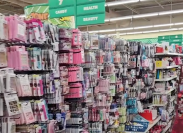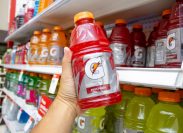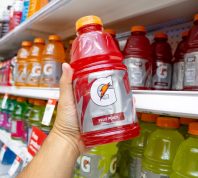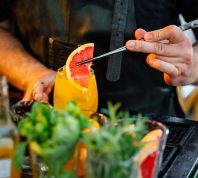This Is How to Never Overpay For Wine
All of the tell-tale signs of a great deal are hiding in plain sight.

While many of us would like to consider ourselves bona fide wine connoisseurs, studies show that most can't distinguish a lousy bottle of wine from a truly top-shelf one. According to blind taste test research out of Hertfordshire University, participants could only differentiate between bargain barrel and bank-breaking white wine 53 percent of the time, begging the question: Why in the world are we paying so much for everyday bottles of vino?
Well, it might be because of the simple fact that our brains derive pleasure from the finer things in life. According to a study out of Caltech, participants actually had an entirely different experience while drinking wine they were told was more expensive. Per the researchers, the medial orbitofrontal cortex—or the part of the brain associated with pleasure—lit up more frequently when users were drinking the "more expensive" wine. So, in short, users are more likely to purchase and enjoy a bottle of wine just based on the price tag alone.
But you're now smarter than that. So how do you ensure you save money—and still get quality wine?
Perhaps the easiest way to save money is to steer clear of regions typically associated with wine, like Napa and France, according to Liz Thach, professor of management and wine business at Sonoma State University. Purchasing wines from lesser known countries like Argentina, Chile, and Austria—which tend to clock in at around $10 to $20 per bottle, as opposed to wines from Napa, which can run you up $20 to $40—will pay off in the long run.
While good vino may not be associated with bargain chains like Costco, according to Andrew Cullen, editor of Costco Wine Blog, these places can be great for finding deals on your favorite brands. For instance, you could pick up 2009 Châteauneuf-du-Pape for $80. While you're at it, you might discover new gems that delight your taste buds and your wallet. (However, it's essential to keep in mind your state's liquor laws, as only 36 states allow for this money-saving option.)
If you're in a restaurant, don't pay attention to the more expensive items on a restaurant's menu. According to Karen MacNeil, author of The Wine Bible, many restaurants won't even give you the option of purchasing a less-than-great glass of wine because they don't want their customers to have a bad experience. So it turns out that being thrifty at a restaurant will still ensure the glass of wine is top notch (unless, of course, you're sipping wine at your local dive).
If you're shopping in a wine store, there are plenty of tricks that amateur oenophiles can use to increase their chances of scoring a better bottle—and good news: they're all hiding in plain sight. For one, know that heavier bottles usually mean better wine. (They require more glass at greater production cost, so winemakers won't fill them with the bad stuff.) Also, immediately note the punt, the indention underneath the bottle. Is it flat? If so, you're holding cheap wine. Is it deep enough to hide your fist in it? Yeah, hold onto that one for a special occasion.
Finally, the most essential tip to keep in mind while shopping at your local wine shop is, simply, to stay calm. While it can be easy to get a little intimidated with rack after rack of expensive wine, the best way to keep your budget in mind is to keep your cool. According to Thach, around 30 percent of consumers are often overwhelmed by the variety and pretentious aura of their local wine shop. So, the bottom line is really to avoid the wine snobs and head straight for that $20 bottle of wine with confidence. And if you need any reasons to pick up a bottle (as if), learn the 80 Amazing Health Benefits of Drinking Wine.
To discover more amazing secrets about living your best life, click here to sign up for our FREE daily newsletter!





















